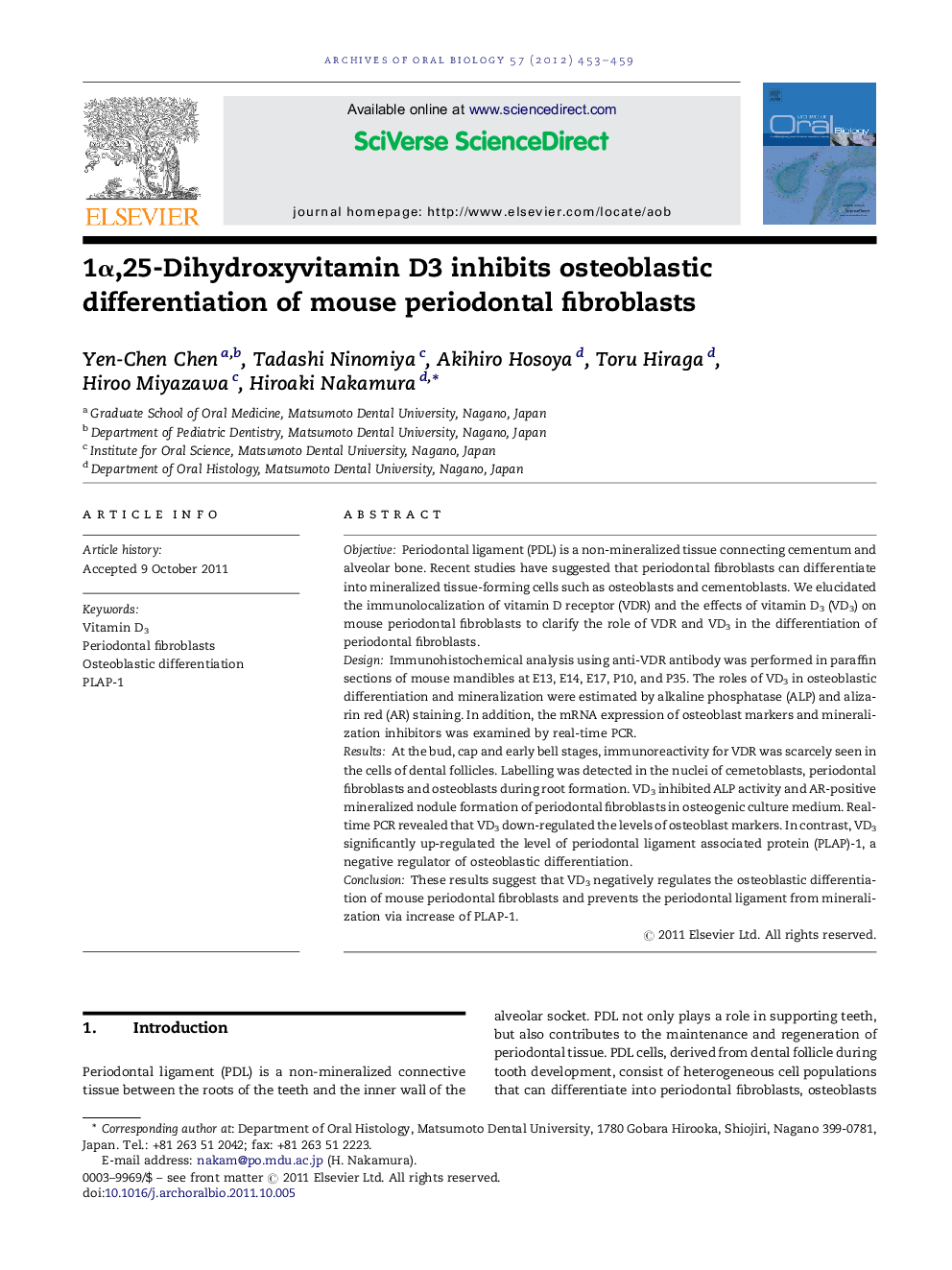| Article ID | Journal | Published Year | Pages | File Type |
|---|---|---|---|---|
| 6052026 | Archives of Oral Biology | 2012 | 7 Pages |
ObjectivePeriodontal ligament (PDL) is a non-mineralized tissue connecting cementum and alveolar bone. Recent studies have suggested that periodontal fibroblasts can differentiate into mineralized tissue-forming cells such as osteoblasts and cementoblasts. We elucidated the immunolocalization of vitamin D receptor (VDR) and the effects of vitamin D3 (VD3) on mouse periodontal fibroblasts to clarify the role of VDR and VD3 in the differentiation of periodontal fibroblasts.DesignImmunohistochemical analysis using anti-VDR antibody was performed in paraffin sections of mouse mandibles at E13, E14, E17, P10, and P35. The roles of VD3 in osteoblastic differentiation and mineralization were estimated by alkaline phosphatase (ALP) and alizarin red (AR) staining. In addition, the mRNA expression of osteoblast markers and mineralization inhibitors was examined by real-time PCR.ResultsAt the bud, cap and early bell stages, immunoreactivity for VDR was scarcely seen in the cells of dental follicles. Labelling was detected in the nuclei of cemetoblasts, periodontal fibroblasts and osteoblasts during root formation. VD3 inhibited ALP activity and AR-positive mineralized nodule formation of periodontal fibroblasts in osteogenic culture medium. Real-time PCR revealed that VD3 down-regulated the levels of osteoblast markers. In contrast, VD3 significantly up-regulated the level of periodontal ligament associated protein (PLAP)-1, a negative regulator of osteoblastic differentiation.ConclusionThese results suggest that VD3 negatively regulates the osteoblastic differentiation of mouse periodontal fibroblasts and prevents the periodontal ligament from mineralization via increase of PLAP-1.
